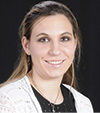With consumers close at hand and a growing demand for quality beef products, Ohio cattlemen have found unique ways to contribute to the industry on the local and national levels.
Despite the average herd size of only 16 head, operation types of all kinds can be found across the state. To the north and west you’ll find small-scale feeders, with more cow-calf farms in the south and various purebred registered herds found all over, according to Stephen Boyles, Ohio State University extension beef specialist.
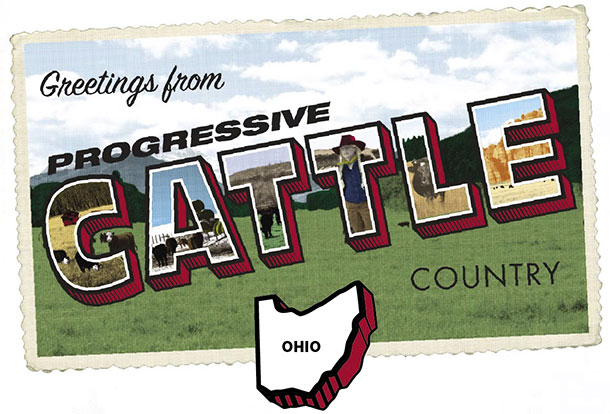
“Here in the eastern part of the United States, we probably have a higher percentage of cattle that grade Choice,” he says. “A lot of packers expect that when they need Choice, they can get it here out of the eastern Corn Belt.”
The Ohio cattle culture
With excellent ground suitable for long-term grazing and traditional crop production, Ohio is an attractive haven for those raising animals on traditional pasture or feeding out. J&L Cattle Services is one operation that found the perfect home in the northeastern part of the state.
The enterprise is owned and operated by the Harr family: Jeff, Lou Ellen and their daughter, Keayla, who commercially raise heifers and run their own purebred herd of registered Herefords.
“Pretty much, the Herefords brought me to Ohio,” says Lou Ellen Harr. A southern Missouri native with a background in raising registered cattle, Harr was managing a herd in Virginia but came to Ohio for a position at Big T Ranch in Jeromesville.
“I came up here and just fell in love with the area; I was taken by all the pride people had in their places and how pretty it is.” In 1996, the same year their daughter was born, Lou Ellen and Jeff purchased the ranch when it came up at auction and began their own business from there.
J&L Cattle Services custom raises 100 head of heifers coming from across Tennessee, Kentucky, West Virginia and Ohio. Animals come in when they’re ready to be weaned and stay until they are old enough to be bred A.I. before returning to their home farms.
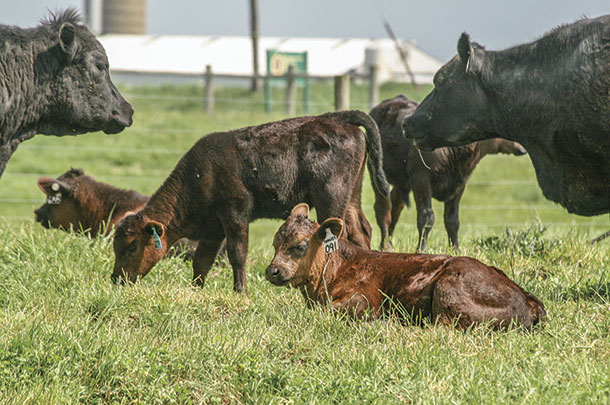
The Harrs also calve around 70 to 80 of their own Hereford mother cows each year, mostly in the spring and a handful in the fall. Every other year, they host a breed production sale on their farm. They even operate a small feedlot, finishing anywhere from 25 to 45 head per year on their own feed, selling to a local packer under the Ohio Proud label.
“The best part is: There is a lot of disposable income in Ohio. People like the idea of being able to put registered livestock, or having their children show registered livestock, on their small acreages. That is definitely one of the good parts,” says Harr. “Also, all the great people, the friends we’ve made in the industry. That would probably be my number one.”
Another strength of the state is the soil productivity and diversity, making it excellent grazing ground a large part of the year. With such opportunity comes a struggle in finding and keeping enough land, says Harr. “(In) raising cattle, we can’t compete with the people who are raising row crops, as far as the money we can give for our ground.”
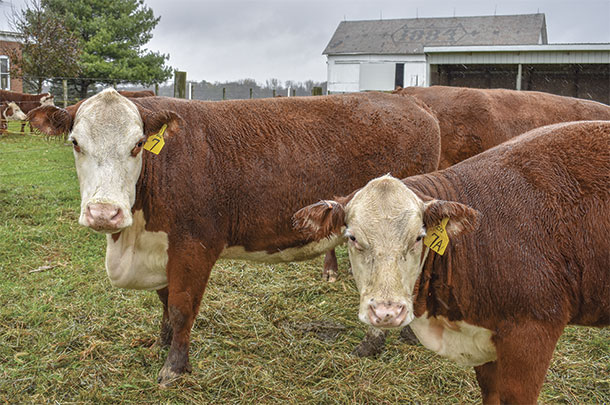
While finding acreage may be an issue, the grasslands make beef an easy and profitable resource when obtainable.
“I think it’s an important part of utilizing the resources of the state of Ohio, certainly in the southern part of the state and the eastern part,” says Boyles. “We have a lot of grasslands available to us, which is a natural place for a vigorous cow-calf industry and for providing quality cattle to feeders.” Opportunities for stocker cattle may be an underutilized resource in plain sight.
“I think we have opportunities we aren’t totally utilizing for stocker cattle. There’s people perhaps that don’t have the time to commit to a cow-calf program that could utilize unused grass in the southern and eastern parts of Ohio,” he says, noting the 2014 Stocker Award winner, The Young Cattle Company, was an operation in Belmont, Ohio. “That’s a person that’s making it work, so I think that’s an opportunity for other people as well.”
On other small-scale operations, many producers opt for promoting their products in their own labeled programs. “I think there’s still a lot of opportunities for people to do even more niche marketing close to home, be it grass-fed or however,” says Boyles. “For these very small operations … there’s that opportunity for that person who wants their own brand because of that unique situation.”
Being so close to population centers gives cattlemen an excellent opportunity to take hold of niche marketing. “Another area that’s not talked about a lot is freezer beef,” says Boyles. “There’s people feeding out a few steers, heifers, whatever – and because they’re close to Akron, Canton and Cleveland, there’s a viable way to probably notch that one up even some more.” Being the seventh-most populous state, Ohio is a hotbed of consumers who spend $4.1 billion on beef products annually.
Branded products
The idea of promoting a quality beef product under a brand has a history in Ohio. Certified Angus Beef brand, a name of national familiarity among both producers and consumers, is headquartered in Wooster, founded by the state’s very own cattlemen. “It actually goes all the way back to the origins of the very idea of Certified Angus Beef,” says Mark McCully, vice president of production for the brand.
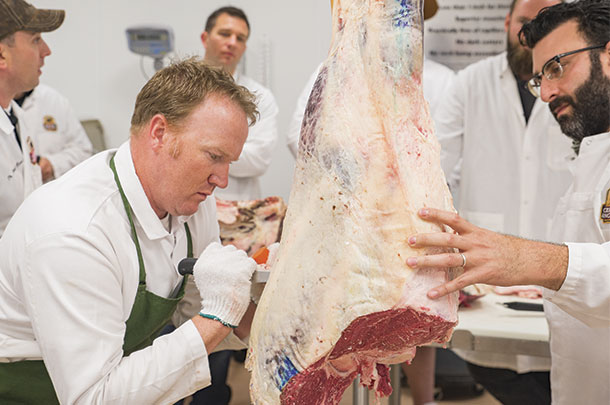
The idea was born in the mid-’70s by an Angus breeder named Harold Etling. He, along with a handful of other breeders, championed the idea of a breed-specific brand focusing on consumer satisfaction, a product with superior flavor and quality as opposed to lean, red meat products dominating the market at the time.
“That group of Ohioans, breeders, got together and said, ‘If we brand this product and put a set of science-based specifications around, it would be good for long-term beef demand and would be good for our businesses here in Ohio to sell more Angus bulls,’” says McCully.
While still a fully owned subsidiary of the American Angus Association, headquartered in St. Joseph, Missouri, the Certified Angus Beef brand has always kept its office and identity in the state of Ohio, says McCully.
Today, the brand continues to grow in demand, both domestically and internationally, which is excellent news for the many producers who participate in the program throughout the U.S. “We think that’s really, really good for cattlemen focused on a high-quality end product.”
A pursuit of quality
Promotion and improvement is something many industry businesses, associations and partners have worked together on for a long time. Building trust with consumers, McCully notes, is something that doesn’t happen overnight. Working with consumers and those selling products to understand what goes on at the farm level of the industry is important as well as educating cattlemen.
“We really value our heritage and the fact we are really rooted in Ohio,” says McCully. “We have great relationships with Ohio cattlemen, the Ohio Beef Council and Ohio State University. We are very proud of that.”
The push for organized quality assurance programs is also on the rise in the state. Beef Quality Assurance certification is becoming a bigger push. It’s a trend that, according to Boyles, will soon be more of an industry norm and consumer expectation.
“We’re going to start a big push to conduct beef quality assurance programs,” he says. “Some people don’t want to go online; we’re going to train trainers next week to have people who go out into the state and do programs in county offices, auction barns and that sort of thing.”
Outreaches like this have all come together from various industry establishments, including Ohio State University, Certified Angus Beef and the Ohio Cattlemen’s Association. “I think we’re going to see a bunch of changes in the beef industry,” says Harr.
“But the fact people really enjoy raising cows and especially out here in this part of the world … there’ll always be cows here just because people enjoy ’em.” ![]()
PHOTO 1: J&L Cattle Services was established by the Harr family (from left to right) Jeff, Keayla and Lou Ellen in 1996. They plan to continue their Hereford legacy with Keayla planning to return to the farm after studying animal science. Photo courtesy of the Ohio Cattlemen’s Association.
PHOTO 2: Progressive Cattle Ohio
PHOTO 3: New calves graze grass at Chippewa Valley Angus Farms in Rittman, Ohio. Photo by David Cooper.
PHOTO 4: Ideal soil and climate makes an excellent atmosphere for small herds of registered animals targeted at niche labels and markets. Photo courtesy of the Ohio Cattlemen’s Association.
PHOTO 5: The Certified Angus Beef Culinary Center has its home in Wooster, Ohio. Every week, culinary professionals from around the world come to learn more about beef products and production. Photo courtesy of Certified Angus Beef.
Jaclyn Krymowski is a freelance writer based in Ohio.
